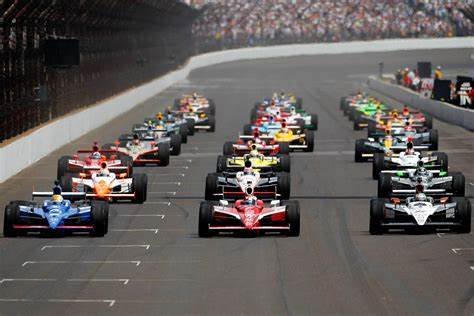The Dakar Rally stands as one of the most grueling and prestigious off-road races in the world, a true test of endurance, skill, and determination. Originally conceived in 1978 as a rally from Paris to Dakar, Senegal, the event has evolved over the years, now spanning diverse terrains and challenging landscapes in various locations, notably South America in recent years and most recently returning to Saudi Arabia. Here’s an in-depth look at what makes the Dakar Rally a monumental challenge for participants and a captivating spectacle for motorsport enthusiasts.
- The Challenging Terrain
Varied Landscapes
The Dakar Rally is renowned for its diverse and challenging terrain, which includes rugged mountains, vast deserts, rocky trails, and treacherous dunes. Each stage brings unique obstacles, demanding adaptability and resilience from competitors.
– Sand Dunes: Iconic for their unpredictability, sand dunes require drivers to master techniques for riding their vehicles over soft terrain without getting stuck.
– Rocky Paths: Navigating rocky sections tests vehicle durability and driver precision, often leading to mechanical failures if not approached carefully.
– Water Crossings: Rivers and mud puddles can add another layer of complexity, posing risks of flooding or cumbersome navigation.
Constant Adaptation
Competitors must constantly adapt to changing conditions and terrain features, which requires extensive preparation, vehicle modifications, and a deep understanding of off-road driving techniques.
- Endurance and Persistence
The Dakar Rally is not just a race; it’s a test of endurance. With stages spanning several thousand kilometers and lasting 10 to 14 days, competitors face physical and mental challenges that push them to their limits.
Physical Demands
Drivers and navigators often endure extreme weather conditions, ranging from scorching heat during the day to freezing temperatures at night. Long hours spent behind the wheel can lead to fatigue, dehydration, and physical strain, requiring rigorous fitness and stamina.
Mental Toughness
The mental challenges of the Dakar are equally significant. Navigating through complex terrains and ever-changing landscapes testing decision-making skills and spatial awareness. Participants must remain focused, often relying on navigation tools while resisting the pressure of time constraints and fatigue.
- Teamwork and Strategy
Success in the Dakar Rally is rooted in effective teamwork and strategic planning.
Crew Coordination
Each team typically consists of a driver, co-driver, and a support crew, all working in unison. The co-driver plays a vital role in navigation, using road books, GPS, and maps to keep the team on course. Their ability to communicate effectively can determine whether a team triumphs or faces setbacks.
Support Vehicles
Support crews travel alongside to provide timely assistance in case of mechanical failures or injuries. Their expertise and quick response can help competitors overcome obstacles, ensuring they stay in the race and maintain their momentum.
- Vehicle Diversity and Innovation
The Dakar Rally attracts a range of vehicles, from cars and trucks to quads and motorcycles, each designed to withstand the unique challenges presented by the rally.
Technological Advancements
Manufacturers and teams continuously innovate in vehicle design, focusing on enhancing performance, durability, and efficiency. The integration of advanced technology, such as navigation systems, suspension designs, and engine efficiency, plays a crucial role in a competitor’s success.
Diverse Categories
Vehicles compete across various categories, each subject to different regulations and engineering constraints. This diversity showcases ingenuity in tackling the same challenges through different approaches—from lightweight motorcycles to powerful 4×4 trucks.
- Global Participation and Cultural Exchange
The Dakar Rally is an international event drawing competitors from across the globe, creating a melting pot of cultures, backgrounds, and driving styles.
A Universal Challenge
World-class drivers, amateur enthusiasts, and teams from various countries come together, promoting camaraderie and sportsmanship. The rally serves as a platform for cultural exchange, allowing participants to share experiences, traditions, and a love for motorsport.
Engaging Local Communities
As the rally travels through different regions, it brings significant economic benefits to local communities, showcasing the culture, landscapes, and hospitality of the hosting nations.
- The Legacy and Prestige
The Dakar Rally boasts a rich history and a legacy that represents the pinnacle of off-road racing. Winning or even completing the rally is a significant achievement, etching competitors’ names into motorsport folklore.
Enduring Appeal
The rally continues to captivate audiences worldwide, inspiring a new generation of motorsport enthusiasts. The combination of adventure, endurance, and innovation keeps fans engaged, whether watching from home or attending the event.
Conclusion
The Dakar Rally is not merely a race; it is an epic challenge that tests human spirit, engineering prowess, and the ability to conquer the world’s toughest terrain. As competitors navigate the unpredictable landscapes and battle the elements, they exemplify resilience, teamwork, and determination. For those who embark on this incredible journey, the Dakar Rally offers an unparalleled experience, one that is forever remembered as a monumental accomplishment in the realm of motorsport. As each new iteration of the race unfolds, the legends of the Dakar Rally continue to grow, enriching the tapestry of automotive history.










